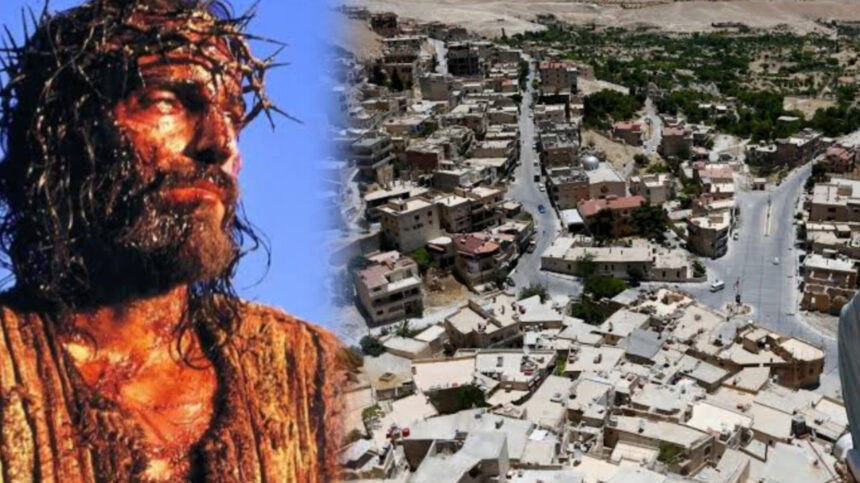By: Dimapur Today International Desk
Published: August 4, 2025
High in the rugged mountains of Syria lies Maaloula, a village that offers a rare and fading window into the ancient world. This small town, located roughly 56 kilometers northeast of Damascus, is one of the last places on Earth where Aramaic—the language believed to have been spoken by Jesus Christ—is still spoken.
In Maaloula and its neighboring villages, Jubb’adin and Bakh’a, a specific form of Aramaic known as Western Neo-Aramaic has survived for over two millennia. Today, the language faces the risk of extinction as conflict, migration, and generational change threaten its fragile legacy.
Though the version of Aramaic spoken in Maaloula differs slightly from the Galilean Aramaic that Jesus is believed to have used, linguists agree that it remains the closest living relative of the biblical language. In homes and markets, elders can still be heard conversing in this ancient tongue, keeping a part of religious and linguistic history alive.
Aramaic was once the lingua franca of the Near East, spoken across modern-day Syria, Lebanon, Palestine, and parts of Iraq. It eventually gave way to Arabic after the 7th century, but pockets of speakers endured—in Maaloula, their resilience is extraordinary.
Maaloula is not just linguistically unique; it is also spiritually rich. The village is home to ancient Christian monasteries, including the revered Monastery of Saints Sergius and Bacchus, carved into the rocky cliffs. These churches are sites of pilgrimage for both Eastern Orthodox Christians and Catholics.
With its stone houses stacked into the mountainside and narrow paths winding through centuries-old shrines, Maaloula stands as a living museum of Middle Eastern Christianity.
In 2013, Maaloula was thrust into the headlines when rebel forces captured the village during the Syrian civil war. Fighting caused widespread damage to homes, churches, and schools—and forced many residents to flee. Although Syrian government forces retook the town, many Aramaic speakers have not returned.
Today, most of those who still speak Aramaic are over the age of 60. The younger generation, raised during wartime displacement and in Arabic-speaking schools, are losing fluency, with few opportunities to learn their ancestral language.
Experts warn that Western Neo-Aramaic may disappear within a generation if not preserved.
Efforts are underway to revive the language. Local teachers and monks have launched summer language camps, created schoolbooks in Aramaic, and even translated parts of the Bible back into the local dialect. Linguists from around the world have recorded native speakers in hopes of preserving the sounds, grammar, and rhythm of this ancient tongue.
George Zaarour, a local Aramaic expert, told reporters, “The language of Jesus is not just history. It is alive—but only just. If we lose Maaloula, we lose the voice of our ancestors.”
The story of Maaloula is not just about language—it’s about identity, memory, and survival. In a region torn by conflict and political shifts, Maaloula is a reminder of the deep and diverse cultural roots of the Middle East.
It also highlights the fragility of heritage in times of war. Without peace, preservation is nearly impossible. Without preservation, Maaloula may one day become just another page in history books—a town where the world once heard echoes of Christ’s voice.
In an age of AI and globalized communication, the idea that a small village can still speak the language of Jesus seems almost mythical. Yet Maaloula is real, and so is its struggle. The world must act quickly—through education, protection, and cultural investment—to keep this ancient voice alive.
Because once it fades, it may never return.
Dimapur Today will continue to cover stories of endangered languages and cultures across the globe.




